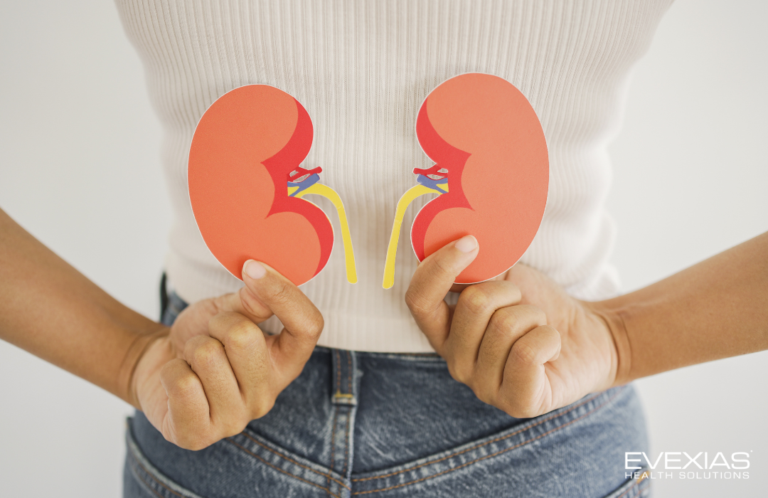The symptoms of menopause can really flip a woman’s quality of life upside down. This wide range of symptoms can attack your ability to focus, sleep, exercise, and more. Menopause can also diminish your sexual desire and affect your physical appearance in different ways, such as hair loss and weight gain, among many others. Simply put, it is an unwelcome change in the quality of life for millions of women worldwide.
This probably comes as no shock, but menopause isn’t just suddenly turned on like a light switch. Rather, there is a gradual transition known as perimenopause that begins as most women approach the age of 40. To make sense of this “menopausal preview” stage of your life and give you some guidance for limiting these life-altering symptoms, keep reading. There are solutions that will allow you to optimize your health and feel like yourself again.
Perimenopause
Have you noticed that you’re not feeling like yourself lately? Depending on your age, you may be entering the early stages of perimenopause. Or, perhaps, if you’ve been feeling less than normal with no end in sight, you may be have been in perimenopause for a while. In either case, you want answers and solutions to the discomfort.
What is Perimenopause?
The actual definition for perimenopause is “around menopause”, and it describes this phase of menopausal transition. Think of it as a preview or a teaser for what is to come further down the road. Most women experience many of the same symptoms of menopause, but often with less intensity or frequency.
Most women who become perimenopausal start to feel the effects of this transition in their 40s, but you may begin to notice these changes as early as your mid-30s. This isn’t always a quick transition to menopause either; this transitional phase can last as little as two years or as many as 10 years.
Whether it is two years or 10 years—it’s too long to feel anxious, moody, sweaty, or tired. That is why it is important to understand perimenopause, and if possible be prepared.
What Causes Perimenopause?
Hormone level fluctuations occur as a woman ages, and during “hormonal events,” such as puberty, monthly menstruation, pregnancy, and childbirth. For many women, hormones never really go back to normal, but cause her to experience a rollercoaster of changes (and perhaps, emotions) with each fluctuation. When perimenopause approaches, the “new normal” is on the horizon—the ovaries begin to slow production. However, in many cases, the decline is not gradual and instead becomes erratic. These unpredictable, erratic changes cause the symptoms of perimenopause.
Why Does Perimenopause Happen?
Since menopause is the time in a woman’s life when menstruation stops, perimenopause is when the ovaries begin to functionally decline. This leads to erratic levels of estrogen and progesterone and unpredictable intervals between menstruation cycles. Again, this phase can last between two and 10 years. Perimenopause officially ends when a woman has gone 12 consecutive months without a period—then she is officially in menopause.
What are the Symptoms of Perimenopause?
Once you begin the menopausal transition phase known as perimenopause, you will experience many of the same symptoms associated with menopause (and a few unique ones as well). Review this list of common (and often uncomfortable) symptoms that may signal that you have entered perimenopause:
- Loss of Sexual Desire (aka Libido)
- Sleep Loss
- Hot Flashes
- Night Sweats
- Muscle and Joint Pain/Aches
- Mood Swings
- Vaginal Dryness and Painful Intercourse
- Headaches
- Cognitive Issues or Trouble Focusing
- Decreased Fertility
- Loss of Bone Density
How is Perimenopause Diagnosed?
If you think you may be experiencing the symptoms of perimenopause, a certified practitioner can assess your hormone levels. Hormone levels are generally assessed through blood and/or saliva testing. Your chosen medical professional will likely look at other factors, such as your medical history, age, and any symptoms you may be experiencing.
What are the Risks of Untreated Perimenopause Symptoms?
You might think that you can “wait it out” when it comes to perimenopause, but there are some health risks associated with untreated perimenopausal symptoms.
Low estrogen levels put women at an increased risk of osteoporosis. Adequate production of estrogen is crucial in maintaining healthy bone density, perimenopause and menopause are associated with low estrogen levels which can lead to week and brittle bones that are more susceptible to injury.
Hormonal fluctuations that are left untreated take a significant toll on your mental health. It’s not one specific symptom or hormone that’s responsible for this impact either. Instead, it’s the culmination of many of these symptoms and the resulting stress that often overloads mental health. Here are just some of the potential mental health issues that can result from perimenopause if not properly addressed:
- High Levels of Stress
- Anxiety
- Increased Risk of Depression
- Strain on Personal Relationships
- Increased Risk of Panic Attacks
How is Perimenopause Treated?
The symptoms of hormonal imbalance that come with perimenopause can be quite varied, so they often require a multi-faceted approach including medicinal and lifestyle-based solutions. Here are just some of the options commonly used for treating perimenopause:
- Regular Exercise
- Antidepressants or Mood Stabilizers
- Nutraceuticals
- Healthy Diet with Fruits, Whole Grains, and Vegetables
- Hormone Replacement Therapy
Hormone Therapy for Perimenopause
The most effective solution for symptoms of perimenopause is hormone replacement therapy (HRT). The symptoms of perimenopause are a direct result of wildly fluctuating levels of estrogen and progesterone. HRT supports restoring balance. These hormones can be administered through a number of delivery methods, including:
- Creams
- Gels
- Patches
- Pills
- Capsules
- Pellet Injections
EvexiPEL Pellet Therapy for Perimenopause
The preferred method of hormone therapy is pellet therapy. Most women prefer pellet therapy for its safety, convenience, comfort, and effectiveness. Pellet therapy has been around since the 1930s and experienced a resurgence in recent years with advancements in the pellet formulation and procedure comfort.
EvexiPEL has earned a reputation among practitioners and patients as the preferred method of pellet therapy because of its safety, comfort, and convenience. Unlike, other pellet therapy options, EvexiPEL uses pellets that specially formulated to reduce inflammation and deliver steady dosing throughout the treatment cycle. Each EvexiPEL certified practitioner is highly trained in a proprietary technique developed to make each pellet insertion more comfortable, support reduced scar tissue, and improve overall results and experience for the patient.
EvexiPEL pellet therapy is available for estradiol therapy and testosterone therapy.
Why is Pellet Therapy Preferred for Perimenopause Treatment?
Many people prefer pellet therapy over other methods because it is convenient compared to all of the other methods. Creams, gels, and oral methods generally require daily administration. Obviously, this increases the chances of missing or forgetting a dose. This isn’t like missing a dose of your morning vitamins Hormone replacement therapy requires strict adherence to the prescribed regimen to keep your hormones balanced.
One pellet insertion appointment achieves hormonal balance that may last 4 to 6 months. No daily pills or creams. No patches that fall off or injections on a cycle. Just steady hormone release that supports vitality and better health while you focus on all the other things going on in your life.
Why Choose the EvexiPEL?
EvexiPEL pellet therapy was expertly developed by Dr. Terri DeNeui, the Founder and Chief Medical Officer of EVEXIAS Health Solutions, the parent company of EvexiPEL. Dr. DeNeui believed that pellet therapy was the most effective form of hormone replacement therapy, but she recognized that it wasn’t perfect and often left women and men feeling uncomfortable or suffering from unwanted side effects. This led her to research and explore the possibilities.
EvexiPEL pellet therapy was crafted through 15 years of meticulous research, which included careful examination of 80 years of prior research. Dr. DeNeui even spent time as the understudy to Dr. Gino Tuttero, a practitioner well-known for pioneering the pellet therapy industry. The pellets and the methodology set EvexiPEL apart in a crowd.
Today, tens of thousands of patients are enjoying greater vitality, better health, and a higher overall quality of life because of EvexiPEL pellet therapy.







